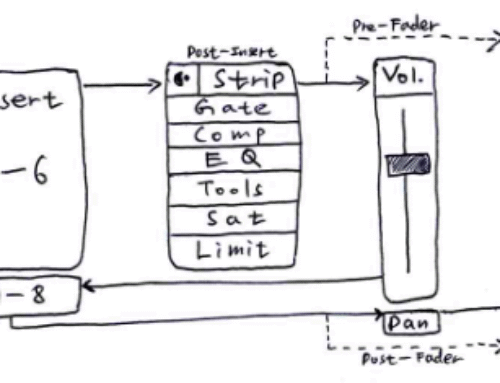| Recent Comments |
| Categories |
| Archives |
| Tags |
IK Multimedia ARC System 3.5 and MEMS microphone
Update 28 december 2021. I don’t use the ARC system anymore. Instead I use Sonarworks SoundID to calibrate my headphone response. I have also tried to to correct my room acoustics but I have become more sceptical about this. I explain [here] the reasons for this.
My monitoring system (Yamaha HS5/HS8S) does not have a flat frequency response. This is not only due to the monitor design itself but also because of my room (reflection, resonance, etc) characteristics. The IK Multimedia ARC System 3 is a software product that uses the MEMS measurement microphone to calibrate (increase flatness) of the frequency response.
The ARC system uses an automatic multi-point room measurement system based on Audyssey MultEQ® XT32 technology. MultEQ® XT32 captures acoustical information at multiple locations throughout a listening area in both the time and frequency domains. It uses a sophisticated clustering algorithm to combine this information so that acoustical problems are accurately analyzed. Based on these measurements, MultEQ® XT32 calculates an equalization solution that corrects for both time and frequency response problems in the listening area and also performs a fully automated system setup
ARC System 3 now includes the ultra-precise MEMS measurement microphone that perfectly works in synergy with ARC’s correction software. A MEMS (MicroElectrical-Mechanical System) microphone is also called a microphone chip or silicon microphone. A pressure-sensitive diaphragm is etched directly into a silicon wafer by MEMS processing techniques, and is usually accompanied with integrated preamplifier. See also here.
The microphone is built around an omnidirectional, high precision MEMS capsule that ensures maximum response accuracy and stability over time. In contrast to standard condenser measurement microphones, which are potentially subject to subtle frequency response variations over time, MEMS technology is far more stable.
Specifications microphone
- Signal to noise ratio: 65 dB (A)
- Max SPL: 124 dB
- Frequency response: 20-20000 Hz
- Polar pattern: Omni directional, free field
One reason why I use this system is because it allows to mix for multiple devices. With the “Virtual Monitoring” section you can intentionally shape the sound of the monitoring setup to match devices like LCD TVs, car audio systems, small radios, etc. This way you can quickly listen to your mix on other “virtual” band-limited systems to ensure a perfect sound translation.
Images
Image: the ARC plugin and the MEMS microphone
Image: Monitor correction curve
Image: the ARC predefined monitor target curves
Image: the ARC monitoring section
Image: the MEMS measurement microphone
Image. MEMS (MicroElectrical-Mechanical System) microphone is also called a microphone chip or silicon microphone
Manuals
ARC2.5 Quick start guide (pdf) 1.14 MB 572 downloads
ARC System 2 - Acoustic Correction System from IKMultimedia See also: ARC System...ARC2.5 User Manual (pdf) 4.36 MB 318 downloads
ARC System 2 - Acoustic Correction System from IKMultimedia See also: ARC System...
Video
Room correction of my Home Studio with the previous ARC 3 system
Room correction of my Home Studio with the previous ARC 2.5 system
Below a few images taken during the room correction of my Home Studio.
Below you see the calibration curve for the left and right monitor after measurement with ARC 2.5
Here is the correction curve with ARC 3 (I am amazed how accurate this is compared to the HS5 specification):
As expected, this curve corresponds to the frequency response curve of the Yamaha HS5/HS8S monitor system.
Below you find two sound fragments of Ever Mysterious without and with ARC2.5. Both tracks are normalized to 0 dB peak level. The difference is bass is clear.
I am now looking forward to my next mixing project to see if it makes the mixing easier and/or improves the final result.


















